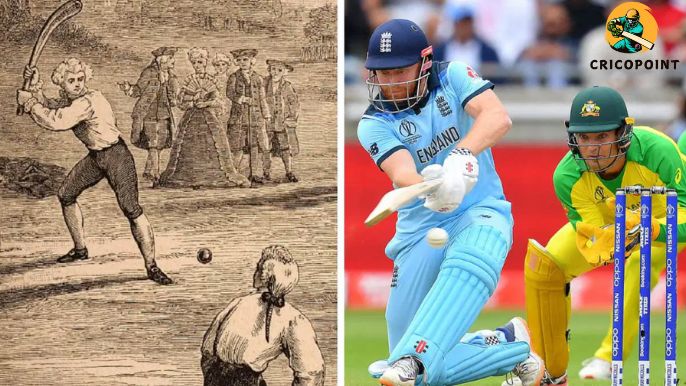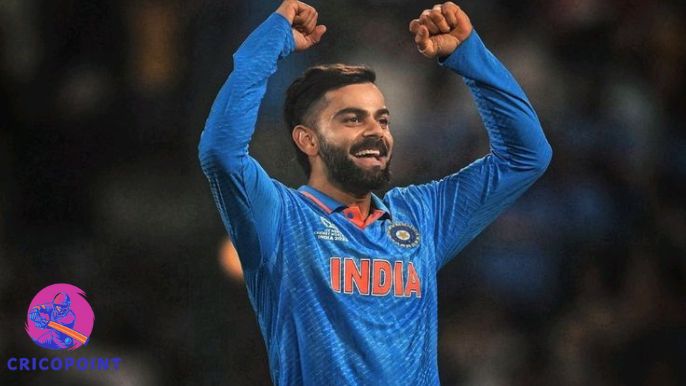Cricket is considered one of the most famous and widespread in terms of popularity and craze, you can see its popularity from the streets to the international level. We are already aware of how huge a fandom we have for cricket in India but do you know how this game “Cricket” came into existence? This article will discuss everything we know about cricket’s history and how it gained fandom and popularity.
History of Cricket
- Origination of Cricket
During the Norman time, cricket originally belonged from south-east England, which is situated between Kent and Sussex. It wasn’t initially an adult game but was invented by children from Weald. We can find its written origin and explanation from the 16th century. This game remained as children’s play for almost the whole century; later during the 17th century, it was taken up by adults.
Although during the origination period, ball and bat weren’t added to its definition, instead it might have been a stick which would have been used to hit and a stone, a lump of wool from sheep, as per it coming from an area which was common for rearing sheep or anything else.
- How the word Cricket came into existence
For the word Cricket, many speculations have been made which state its origin and establishment from different languages and areas. Still, above all as per the University of Bonn, the word Cricket comes from Dutch during its mid-phase where it was used for hockey (Krik Ket) which means the chase with the stick.
- Popularity of Cricket in History
Cricket got its fame and popularity from gambling after 1660 when huge bets were made by gamblers on this game, it was in 1664 when stakes were limited to 100 euros, which was a huge amount then, and this rule was passed by the Cavalier parliament under the gaming act 1664. This game got its first press release under the headline “great match” which played in Sussex itself, and the stakes for this game were 50 quarter gold coins.
- Formation of team and players
As gambling and its popularity increased so did the modifications in cricket, to strengthen their teams and their bets the gamblers started to have more power on their side they started to have well-skilled players and a strong team format.
It was in 1709 when specific names were used by the teams, the early patrons for the game were aristocrats and businessmen from as early as 1725, on average.
- Basic Cricket rules and Laws
It was 1774 when proper n rules started to build up in1774, 1787 The “Star and Garter Club” was the one that set new rules that were supposed to be followed by all in cricket. A few rules which were then set are as follows: –
- Invention of LBW.
- Middle stump and bat width were defined.
- Two umpires were set to judge and dissolve all the disputes.
Establishment of International Cricket
The first international cricket game took place in 1844 which took place between the US and Canada at St. George’s Cricket Club in New York. Later in 1862, the English professionals started to have their match internationally. It was the Aboriginal Australian team that was considered the first Australian team to travel overseas.
The 20th century was marked by the growth of international cricket and the Imperial Cricket Conference was founded in 1909 which included England, Australia, and South Africa which were considered the founding members of international cricket.
South African Cricket Association was then considered as its original association and ICC included Marylebone Cricket Club, the Australian Board of Control for International Cricket. In 1926 New Zealand and the West Indies were added as members, and later in 1952 both India and New Zealand were included as Test-playing nations before World War II and then Pakistan joined as well.
Due to South African racial segregation, it was suspended from 1971 to 1981 and South Africa left the Commonwealth of Nations and hence the cricket board of South African cricket board had to leave the International Council of Cricket.
Here are the Basic Rules of Cricket
- A single team in cricket has 11 players. These 11 players include batsmen, bowlers, and a wicketkeeper.
- The length of the pitch is 22 yards which is situated in the middle of a circular or oval-shaped ground.
- at both ends of the pitch have three wooden wickets with two bails on top of three wickets.
- Out of two teams one team bats and the other team balls and then it turns vice-versa for the other team.
- One over consists of 6 balls.
- There are different innings, and each inning has a different number of overs.
- The one-day international matches have 50 overs in an inning.
- The twenty-twenty international matches have 20 overs in an inning.
- While the innings are on, the team that is batting will have two of its batsmen on the pitch.
- Whereas the team which is bowling will have all 11 players on the field as fielders.
- One player from the bowling team will be there on the pitch as a bowler.
- Another player on the pitch from the bowling team’s side on the pitch will be the Wicket-keeper, who will be standing behind the wicket on the batter’s side.
- There will be two umpires appointed on the field in order to dissolve the disputes occurring on the field.
- Another umpire known as the third umpire is there, who monitors every move on the field through the screen, and is used and referred to at the time of tough decisions.
FAQs
Ques- which country invented cricket?
Ans- cricket was invented by England.
Ques- who is considered as the father of cricket?
Ans- Sir William Gilbert Frace is known as the father of cricket.
Ques- what does the word cricket mean?
Ans- the Dutch meaning of this word is chase with the stick.
Ques- what is 111 in cricket?
Ans- 111 is referred as a wicket in cricket.




